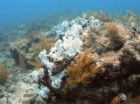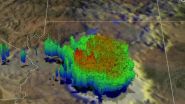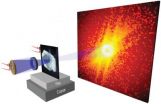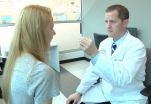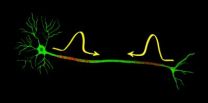Residual hydraulic fracturing water not a risk to groundwater
2014-09-10
(Press-News.org) Hydraulic fracturing -- fracking or hydrofracturing -- raises many concerns about potential environmental impacts, especially water contamination. Currently, data show that the majority of water injected into wells stays underground, triggering fears that it might find its way into groundwater. New research by a team of scientists should help allay those fears.
In a paper published in the current issue of the Journal of Unconventional Oil and Gas Resources, Terry Engelder, professor of geosciences, Penn State; Lawrence Cathles, professor of earth and atmospheric sciences, Cornell University; and Taras Bryndzia, geologist, Shell International Exploration and Production Inc., report that injected water that remains underground is sequestered in the rock formation and therefore does not pose a serious risk to water supplies.
Hydraulic fracturing is a drilling technique commonly used to extract gas from previously inaccessible "tight" gas reserves, including gas trapped in shale formations such as the Marcellus. During this technique between 1.2 and 5 million gallons of water mixed with sand and chemical additives are injected at high pressure into each well to fracture the rock and release the gas.
Typically less than half of the injected water returns to the surface as "flowback" or, later, production brine, and in many cases recovery is less than 30 percent. In addition to the chemical additives, flowback water contains natural components of the gas shale including salt, some metals, and radionuclides and could impair water quality if released without proper treatment. While flowback water can be managed and treated at the surface, the fate of the water left in place, called residual treatment water or RTW, was previously uncertain.
Some have suggested that RTW may be able to flow upward along natural pathways, mainly fractures and faults, and contaminate overlying groundwater. Others have proposed that natural leakage of the Marcellus is occurring without human assistance through high-permeability fractures connecting the Marcellus directly to the water table and that hydraulic fracturing could worsen this situation.
The researchers report that ground water contamination is not likely because contaminant delivery rate would be too small even if leakage were possible, but more importantly, upward migration of RTW is not plausible due to capillary and osmotic forces that propel RTW into, not out of, the shale. Their study indicates that RTW will be stably retained within the shale formation due to multiphase capillary phenomena.
"Capillary forces and coupled diffusion–osmosis processes are the reasons the brines and the RTW are not free to escape from gas shale," said Engelder. "The most direct evidence of these forces is the observation that more than half the treatment waters are not recovered. Introducing treatment water causes gas shale to act like a sponge based on the principles of imbibition.
"Imbibition into gas shale is made possible by the high capillary suction that a fine-grained, water-wet shale matrix can exert on water. As water is wicked into gas shale, the natural gas in the shale is pushed out. The capillary forces that suck the RTW into the gas shale keep it there."
Estimating imbibition is complicated, but simple experiments conducted by the researchers show that water can be readily imbibed into gas shale in quantities fully capable of sequestering RTW. The researchers demonstrated this process in a series of experiments on cuttings recovered from the Union Springs Member of the Marcellus gas shale in Pennsylvania and on core plugs of Haynesville gas shale from NW Louisiana.
"The hydraulic fracturing fluid consists mostly of very low-salinity surface water, while the shale contains high concentrations of water soluble inorganic cations and anions," said Engelder. "During hydraulic fracturing water is lost to the formation while inorganic cations and anions are transferred from the formation to the hydraulic fracture. Diffusion osmosis assists the rapid imbibition of water by the shale and diffusion of ions into the treatment water causing the high salinities observed in flowback fluids. The point to be emphasized here is that this osmotic pressure pushes the hydraulic fracture fluids into the shale matrix, expelling gas and cations to make high-salinity flowback in the process."
The researchers believe that in addition to there not being enough water in the shale to contaminate groundwater, the most important point of their work is that multiphase capillary phenomena must be considered in cases where a non-aqueous fluid is present in the subsurface pore space. The vadose zone -- the area from the surface to the groundwater -- and oil and gas migration cannot be understood using single-phase, porous-media flow methods, and any policy insights or prescriptions based on single-phase considerations will be fatally flawed, they argue.
"The practical implication is that hydrofracture fluids will be locked into the same 'permeability jail' that sequestered overpressured gas for over 200 million years," said Engelder. "If one wants to dispose of fracking waters, one could probably not choose a safer way to do so than to inject them into a gas shale."
INFORMATION:
The Research Partnership to Secure Energy for America and Penn State's Appalachian Basin Black Shale Group, an industrial affiliates group, supported this research.
ELSE PRESS RELEASES FROM THIS DATE:
Penn research shows how brain can tell magnitude of errors
2014-09-10
University of Pennsylvania researchers have made another advance in understanding how the brain detects errors caused by unexpected sensory events. This type of error detection is what allows the brain to learn from its mistakes, which is critical for improving fine motor control.
Their previous work explained how the brain can distinguish true error signals from noise; their new findings show how it can tell the difference between errors of different magnitudes. Fine-tuning a tennis serve, for example, requires that the brain distinguish whether it needs to make a ...
Ocean warming affecting Florida reefs
2014-09-10
ST. PETERSBURG, Fla.— Late-summer water temperatures near the Florida Keys were warmer by nearly 2 degrees Fahrenheit in the last several decades compared to a century earlier, according to a new study by the U.S. Geological Survey.
Researchers indicate that the warmer water temperatures are stressing corals and increasing the number of bleaching events, where corals become white resulting from a loss of their symbiotic algae. The corals can starve to death if the condition is prolonged.
"Our analysis shows that corals in the study areas are now regularly experiencing ...
Networking can make some feel 'dirty,' says new study
2014-09-10
Toronto – If schmoozing for work leaves you with a certain "ick" factor, that's not just awkwardness you're feeling.
Professional networking can create feelings of moral impurity and physical dirtiness, shows a new study.
That can hold people back from networking more, reducing career opportunities and lowering job performance, says study co-author Tiziana Casciaro, an associate professor of organizational behaviour and human resource management at the University of Toronto's Rotman School of Management. The study was co-written with fellow researchers Prof. Francesca ...
New evidence points to outcomes and cost benefits of telemedicine
2014-09-10
New Rochelle, NY, September 10, 2014—Congestive heart failure, stroke, and chronic obstructive pulmonary disease (COPD) are three of the leading causes of death in the U.S. The use of telemedicine to help manage chronic diseases such as these can yield clear benefits including fewer and shorter hospital stays, fewer emergency room visits, less severe illness, and even fewer deaths, as reported in a study published in Telemedicine and e-Health, a peer-reviewed journal from Mary Ann Liebert, Inc., publishers. The article is available free on the Telemedicine and e-Health ...
Halving the risk of preterm birth for some twin pregnancies
2014-09-10
International research involving the University of Adelaide has found that the risk of preterm birth could be halved for a specific group of "super high-risk" twin pregnancies.
The results could help to save babies' lives throughout the world and prevent serious health complications after birth.
The study, involving researchers from the University of Adelaide's Robinson Research Institute, reviewed all of the previous large studies conducted into the use of progestogen hormones, which have been trialed over the past 10 years to help prevent preterm birth in twins. ...
NASA tracks Norbert moisture to Arizona's drenching thunderstorms
2014-09-10
VIDEO:
This simulated flyby of NASA's TRMM satellite on Sept. 8 saw rain falling at a rate of over 62 mm (2.4 inches) per hour in some downpours over Arizona. Some...
Click here for more information.
Post-tropical storm Norbert may have been centered a couple of hundred miles off the northwestern coast of Mexico's Baja California, but the flow of warm, moist air that spun around it generated drenching thunderstorms over Arizona. NASA's TRMM satellite saw Norbert's remnants and ...
Where to grab space debris
2014-09-10
Objects in space tend to spin — and spin in a way that's totally different from the way they spin on earth. Understanding how objects are spinning, where their centers of mass are, and how their mass is distributed is crucial to any number of actual or potential space missions, from cleaning up debris in the geosynchronous orbit favored by communications satellites to landing a demolition crew on a comet.
In a forthcoming issue of the Journal of Field Robotics, MIT researchers will describe a new algorithm for gauging the rotation of objects in zero gravity using only ...
Advanced light source sets microscopy record
2014-09-10
A record-setting X-ray microscopy experiment may have ushered in a new era for nanoscale imaging. Working at the U.S. Department of Energy (DOE)'s Lawrence Berkeley National Laboratory (Berkeley Lab), a collaboration of researchers used low energy or "soft" X-rays to image structures only five nanometers in size. This resolution, obtained at Berkeley Lab's Advanced Light Source (ALS), a DOE Office of Science User Facility, is the highest ever achieved with X-ray microscopy.
Using ptychography, a coherent diffractive imaging technique based on high-performance scanning ...
Missing piece found to help solve concussion puzzle
2014-09-10
PITTSBURGH, Sept. 10, 2014 – Researchers at UPMC and the University of Pittsburgh have created a new, 5- to 10-minute test that could be added to a clinician's concussion evaluation toolkit for a more comprehensive assessment of the injury.
In a recent study published online first by the American Journal of Sports Medicine, researchers from the UPMC Sports Medicine Concussion Program demonstrated that clinicians could use their novel Vestibular/Ocular Motor Screening (VOMS) examination to be 90 percent accurate in identifying patients with concussion. The VOMS, which ...
Nerve impulses can collide and continue unaffected
2014-09-10
According to the traditional theory of nerves, two nerve impulses sent from opposite ends of a nerve annihilate when they collide. New research from the Niels Bohr Institute now shows that two colliding nerve impulses simply pass through each other and continue unaffected. This supports the theory that nerves function as sound pulses. The results are published in the scientific journal Physical Review X.
Nerve signals control the communication between the billions of cells in an organism and enable them to work together in neural networks. But how do nerve signals work? ...


